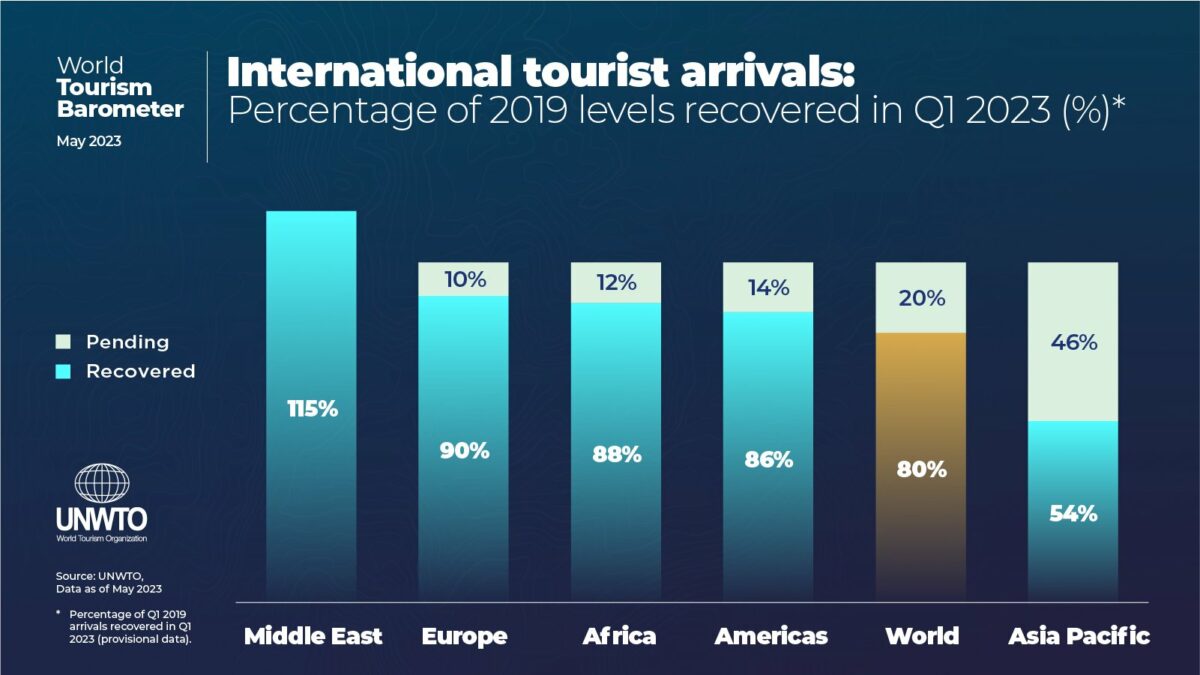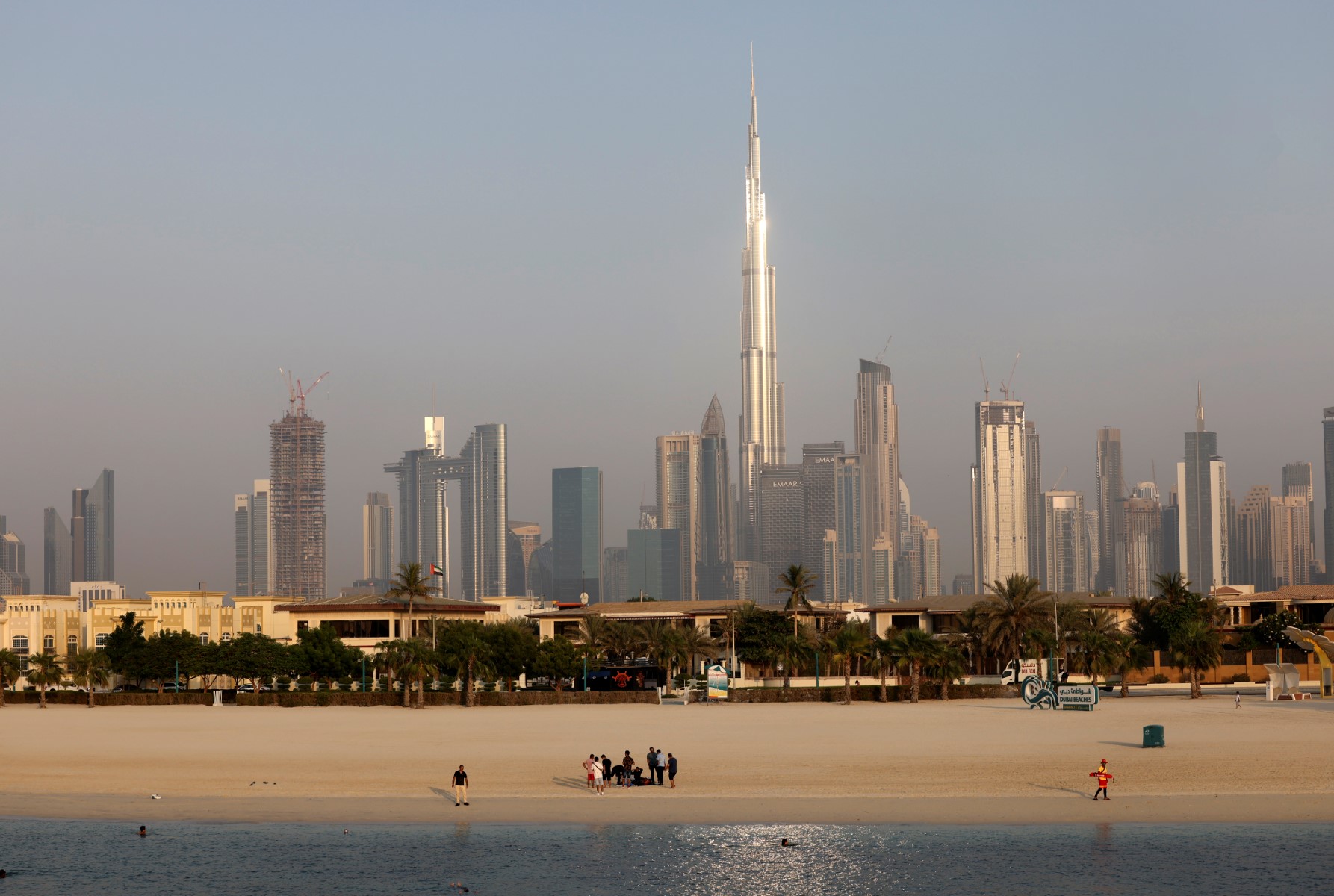Dubai, UAE – The Middle East region recovered 70 percent of its pre-pandemic tourism receipts during the first quarter of 2023, signifying a strong rebound in the sector, according to a latest report by the United Nations World Tourism Organization’s (UNWTO).
A number of factors — including the continued economic recovery, the easing of travel restrictions, and the growing popularity of the region as a tourist destination – have been credited for the resilience in the sector.
The development is part of the global tourism, which continues its impressive trajectory towards pre-Covid levels, with the first quarter of 2023 registering double the international arrivals compared to the same period last year.
The UNWTO’s second tourism barometer of the year underscores the industry’s remarkable recovery, with several regions, including the Middle East, making significant strides.

According to the UNWTO, international arrivals reached 80 percent of pre-pandemic figures in Q1 2023. An estimated 235 million tourists travelled internationally, showcasing the sector’s resilience, it added.
The revised data from 2022 shows a robust recovery, with over 960 million international tourists and two-thirds of pre-pandemic numbers achieved.
Regional performance
Regional recovery varied, with Europe reaching 90 percent of pre-pandemic levels due to robust intra-regional demand, followed by Africa at 88 percent and the Americas at 85 percent.
The Asia-Pacific region demonstrated a promising recovery at 54 percent of pre-pandemic levels, propelled by China’s reopening to tourists. Southern Mediterranean Europe and North Africa also regained their pre-pandemic levels, while Western Europe, Northern Europe, Central America, and the Caribbean are fast approaching those levels.

“The start of the year has shown again tourism’s unique ability to bounce back. In many places, we are close to or even above pre-pandemic levels of arrivals,” said UNWTO Secretary-General Zurab Pololikashvili.
“However, we must remain alert to challenges ranging from geopolitical insecurity, staffing shortages, and the potential impact of the cost-of-living crisis on tourism, and we must ensure tourism’s return delivers on its responsibilities as a solution to the climate emergency and as a driver of inclusive development,” added Pololikashvili.
Factors driving tourism in the Middle East Cultural attractions: The Middle East is home to a rich and diverse culture, which is reflected in its many historical sites, museums, and festivals. Natural attractions: The Middle East is also home to some of the world's most stunning natural scenery, including deserts, mountains, and beaches. Adventure tourism: The Middle East offers a wide range of adventure tourism activities, such as hiking, camping, and diving. Medical tourism: The Middle East is a popular destination for medical tourism, due to its high-quality healthcare facilities and affordable prices.
The UNWTO data reveals that international tourism receipts hit the US$1 trillion mark in 2022, with international visitor spending reaching 64 percent of pre-pandemic levels.
Regionally, Europe topped with nearly US$550 billion in tourism receipts, or 87 percent of pre-pandemic levels, followed by Africa (75 percent), the Middle East (70 percent), and the Americas (68 percent). Asian destinations, impacted by extended border shutdowns, recovered only about 28 percent.
Looking ahead
The UNWTO’s Panel of Experts predicts a robust peak season (May-August) in the Northern Hemisphere. The panel, however, acknowledges challenges such as high inflation, rising oil prices, and geopolitical tensions, such as the Russian aggression against Ukraine, as potential hurdles for tourism’s effective recovery in 2023.
Tourists, consequently, may seek value for money and prefer to travel closer to home, the UNWTO report highlighted.








